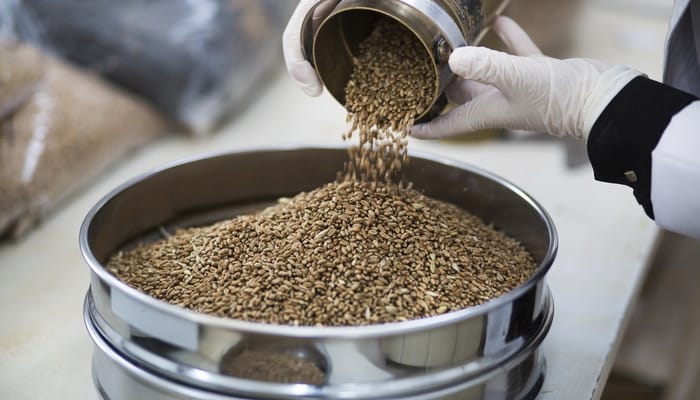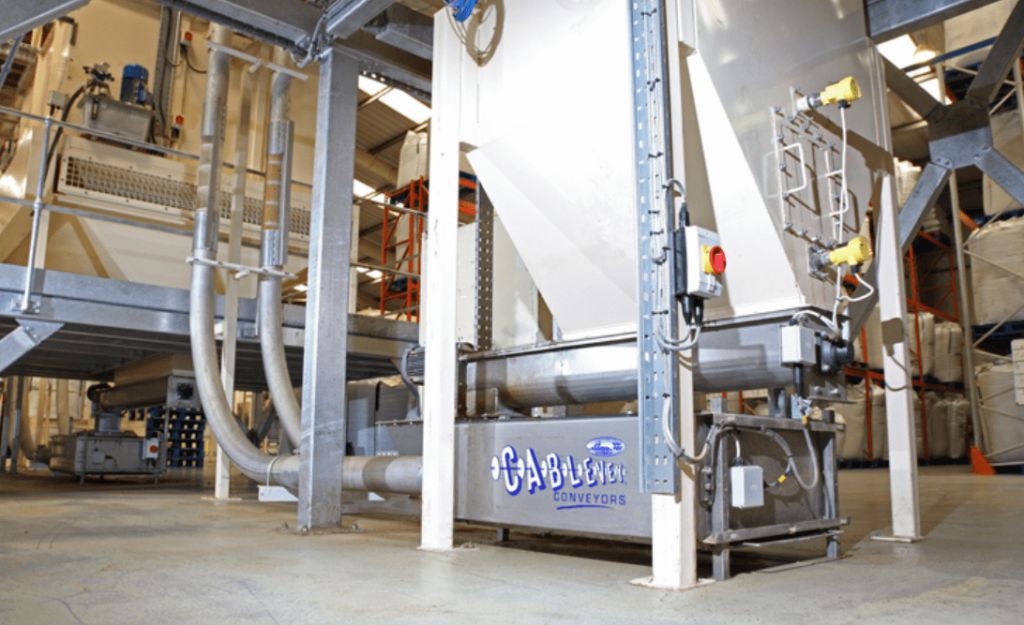Embark on a journey into the heart of beer brewing, where the alchemy of flavors begins with the intricate processing of specialty grains. But let’s go over one important question – how do you produce and process specialty grains during beer brewing? Get ready to witness the seamless blend of tradition and cutting-edge technology in the world of brewing.
How Do You Produce and Process Specialty Grains During Beer Brewing?
Producing and processing specialty grains for beer brewing involves a meticulous journey. Beginning with the selection of high-quality barley, the grains undergo a malting process. This process includes steeping, germinating, and kilning, ultimately transforming the grains into malt. Specialty malts, ranging from caramelized to toasted and roasted, contribute distinct flavors. Once, you only had belt conveyor manufacturers, but now advanced conveyor belt systems, such as tubular conveying, play a crucial role in transporting and processing these delicate grains. These automated conveyor systems ensure efficiency and precision throughout the brewing journey.
Navigating the Malting Process for Exceptional Specialty Grains
Specialty grains serve as the primary components in beer recipe kits, with barley being the prevailing grain in brewing. Although the category of specialty grains encompasses a diverse range, it’s essential to first navigate through the complexities associated with malt. Malt plays a crucial role as a key ingredient in various beer recipes, including craft beers.
Simply put, malt represents a grain transformed into sugar, which subsequently undergoes fermentation, where beer yeast consumes the sugar to produce alcohol. In essence, the journey begins with the grain evolving into malt, eventually culminating in the creation of beer.
This transformative journey, from grain to malt and ultimately to beer, necessitates precision, a journey facilitated by advanced conveyor engineering (ensure you’re using the most suitable systems and avoid traditional options such as a conveyor belt system).

What Is Malt?
Malt is the beer ingredient that adds color, aroma, and flavor to the beer. It also contributes to the body of every lager or ale, setting each beer recipe apart from one another. Even though there are a variety of specialty malts that are used for brewing beer, barley is still the preferred specialty grain used in the process. However, barley, by itself, can’t be fermented into alcohol.
As such, it needs to be converted into malted barley by a process known as malting. As mentioned, there are a wide variety of specialty malts that fall into two broad categories. Firstly, there are malts that need to be steeped, which is good for extract brewing. Second, some malts need to be mashed, which are used for all-grain beer recipes.
What Are the Base Malts?
Base malts (grains) are the basis for all-grain brews as they provide the highest extraction potential of all other malts. However, using extract with specialty grains may lead to a lack of the distinctive flavor and color profile of specialty malts.
Also, base grains’ sugar can only be extracted through mashing. These base malts are not useful when it comes to steeping specialty grains, as is the case with extract beers. Some common base malts include the following:
- Barley malts – Pilsner malt, pale ale malt, mild ale malt,
- Non-barley malts – Wheat and rye malts,
- High-kilned malts – Munich and Vienna malts,
- American base malts,
- British malts.
What Are the Specialty Malts?
Specialty grains, also known as specialty malts, do not require the mashing process. Instead, these malts undergo a unique heating procedure that activates enzymes, converting the starches within the grains into sugars within the hull. Since these sugars are soluble, the distinct characteristics of these specialty malts can be extracted through steeping, as opposed to the traditional mashing method. Within the realm of specialty malts, various types offer diverse flavors and characteristics. These encompass the following:
Caramelized Malts
Also known as crystal malts, caramelized malts are typically used to add color and sweetness to extract beer and all-grain brews. Their name is usually based on their color. As a general rule of thumb, lighter-colored caramelized malts are sweeter, whereas darker ones have a caramel flavor that is more “roasty” and “nutty” in addition to the added sweetness. Dextrin malts also fall within this category and are at the extreme light end of the caramelized malts spectrum.
Toasted Malts
Also known as kilned malts, toasted malts are typically used in low quantities to contribute their unique flavor but not overpower the overall taste. In this category of specialty malts, we can include the following:
- Biscuit malt – It contributes a light, saltine cracker-like flavor.
- Aromatic malt – It is deeper and maltier than biscuit malt.
- Brown and amber malt – Both brown and amber malt are toasted in a similar manner. The difference between them is that brown malt is darker and more “toasty-flavored,” whereas amber malt has less of a pretzel-like flavor.
- Victory malt – This is another lighter option that sits between biscuit malt and amber malt but holds characteristics of both.
- Special roast malt – It has a slightly darker and reddish color with a deeper, fairly strong berry-like taste.
Roasted Malts
Roasted malts are specialty grains that are roasted at high temperatures. They can be either steeped for extract brewing or can be mashed for all-grain beer recipes. When used in low quantities, they can add plenty of color and complexity to beer recipes. But like the toasted malts above, roasted malts should only be used in a proportion of a maximum of 10 to 12% of the grist. Common varieties of roasted malts include:
- Roasted barley – Made out of roasted but unmalted barley, this type of malt adds a strong roasty character, similar to coffee. It’s best limited to 2 to 10% of the grist.
- Black malt – Also known as black patent malt, black malt is significantly darker than roast barley, giving a dry, roasty flavor. It’s best to keep it below 3% of the grist. Otherwise, the taste becomes burnt and ashy.
- Chocolate malt – It is a key beer ingredient used in many porter recipes, but it also works well with brown ale or dark mild ale. Aside from the taste of roasted coffee, it also adds tons of nuts, cocoa, and dark chocolate. A good range in most beer recipes is between 3 to 12% of the grist. Chocolate malt also tends to work well in combination with black malt.
Adjunct Grains
These consist of unmalted starchy grains, with the potential inclusion of items like pumpkin, potatoes, or other starchy vegetables. Diverging from caramelized malts, these adjuncts lack sugars, rendering them unsuitable for steeping in extract brewing. In contrast to malted grains, they lack the enzymes necessary to convert starches into sugar. Consequently, the process they require is mashing. Common examples of grains falling under this category comprise:
- Maize,
- Flaked barley and oats,
- Torrified wheat,
- Rice.
Processing Specialty Grains – What Are the Steps You Need to Be Aware Of?
Processing specialty grain for beer brewing involves a process known as malting. This is where the specialty grain is germinated, then dried in a kiln to stop the process after the sprout has emerged from the hull. The purpose is to develop the necessary enzymes and then halt the process before the starches are converted and the sugars are all used up.
All-grain beer and malt extract require these enzymes in the mash tun to convert the starch into sugar. The malting process requires three steps: steeping, germinating, and kilning. However, the entire specialty grain processing includes a couple more steps. These are as follows:
- Cleaning – After the specialty grain has made it to the brewing facility, it needs to be cleaned for any kind of impurities such as dust, straw, and broken or foreign grains. This helps increase the yield and maintain quality.
- Steeping – This is the first step in creating quality malt. The process involves immersing the grain in water, followed by an air rest period. This allows for the water content in the grain to increase. The absorbed water activates the enzymes and stimulates the grain to develop new enzymes. The steeping process varies, depending on the grain type and size, but it usually takes place over a period of 24 to 48 hours.
- Germinating – During germination (4-6 days), specialty grains undergo growth and modification initiated by steeping. Specialized brewing equipment, including a temperature controller and uniform water spray, aids the process, preventing clumping and ensuring even germination rates.
- Kilning – The last step of the malting process uses a convection heat treatment to dry the green malt in order to prevent further germination. If it continues, the kernels will just keep growing, using up all the starch reserves. This drying process reduces the moisture content and prepares the malt for flavor and color development.
- Malt roasting – When the grain reaches a moisture level of 15%, it will start changing its color.
Efficient Material Transport With a Tubular Conveying System
Throughout this entire specialty grain process, the question of transporting the delicate material between the different processing and brewing equipment will require conveyor technologies. To prevent any degradation, contamination, or waste, tube and cable conveyors are the best option. Cablevey conveyors are specifically designed to handle such fragile materials, including barley, wheat, and other specialty grains.
Optimal Material Handling with Cablevey’s Conveyor Manufacturing Design
The different types of grains are transported gently with an automatic conveyor system, reaching each phase of the process in the precise size, mix, and quantity they need to be. Unlike the traditional belt conveyor system, the tubular design offers no material waste, which is a key concern for many brewers. The enclosed tube systems provided by one of the best conveyor systems manufacturers – Cablevey Conveyors – are also critical in keeping the material clean and safe from any external contaminant.

Use Cablevey Industrial Conveyor Systems for the Best Specialty Grains Gandling
With a tubular automated conveyor system, you can track the journey of the grain through the clear sections of the tube, ensuring that everything is running smoothly. These systems, besides having top-notch conveyor installation supervision, are great for moving both wet and dry grains across all steps of the beer brewing process.
These tube and cable conveyors offer a great deal of flexibility and customization, fitting both the unique layout of the facility as well as the quantities of material needed to be transported on a daily basis. By using Cablevey conveyor solutions, you will ensure that the processing of your specialty grains will take place as seamlessly and as effectively as possible. Contact us today and find out all about our features, including cleaning conveyor belts and many others. Take your conveying process to the next level!






